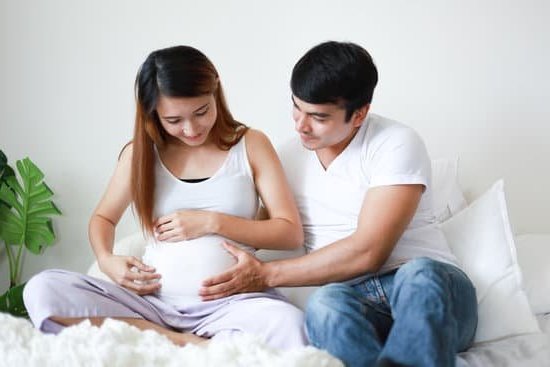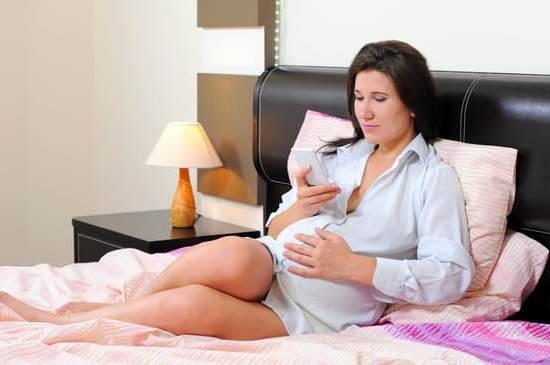Can cramps be a sign of pregnancy? Many women wonder about this as they experience unexplained discomfort. Understanding early pregnancy symptoms is crucial for anyone trying to conceive or who may suspect they are pregnant. This article aims to shed light on the connection between cramping and pregnancy, providing insight into what to expect and how to differentiate between regular menstrual cramps and potential early signs of pregnancy.
Cramps are a common occurrence in many women, often signaling the onset of menstruation. However, they can also be a sign of early pregnancy. In this section, we will explore what cramps are, how they occur in pregnancy, and the hormonal changes that can lead to this discomfort during the early stages of gestation.
Differentiating between regular menstrual cramps and pregnancy cramps is essential for those trying to conceive. It’s important to understand the difference in sensation and duration, as well as any additional symptoms that may accompany the cramping. By examining these distinctions, individuals can better identify potential signs of early pregnancy and seek appropriate medical advice if needed.
What Are Cramps and How Do They Occur in Pregnancy?
Cramps are a common discomfort experienced by many pregnant women, especially during the first trimester. These cramps can vary from mild to severe and may feel similar to menstrual cramps. The occurrence of cramps during pregnancy is often due to the changes happening in the uterus as it expands to accommodate the growing fetus. Understanding what causes these cramps and how they occur in pregnancy is important for expecting mothers.
During pregnancy, the uterus undergoes significant changes as it stretches and grows to make room for the developing baby. This expansion can cause the ligaments and muscles supporting the uterus to stretch and pull, leading to cramping sensations. Additionally, as blood flow increases in the pelvic area during pregnancy, some women may experience cramps as a result of this heightened circulation.
Differentiating Between Regular Menstrual Cramps and Pregnancy Cramps
Here are some key differences between regular menstrual cramps and pregnancy cramps:
- Duration: Menstrual cramps typically last for a few days during your period, while pregnancy cramps can occur intermittently throughout the day.
- Intensity: Pregnancy cramps are usually milder than menstrual cramps, which can be quite intense.
- Accompanying symptoms: Menstrual cramps may be accompanied by heavy bleeding, while pregnancy cramps are not typically associated with bleeding.
It’s important for pregnant women to pay attention to the nature of their cramps and any accompanying symptoms in order to differentiate between regular menstrual discomfort and potential signs of pregnancy.
Hormonal Changes and Their Connection to Cramping in Early Pregnancy
The early stages of pregnancy are marked by significant hormonal changes within a woman’s body. These hormonal fluctuations can also contribute to experiencing cramping during early pregnancy. The hormone progesterone, which is essential for maintaining a healthy pregnancy, can also relax smooth muscle tissue in the body. This relaxation effect on muscles can lead to mild cramping sensations as the uterus adjusts to its new role in supporting a growing fetus.
- Ligament pain: As hormones loosen ligaments and joints in preparation for childbirth, some pregnant women may experience sharp pains or brief jabs of discomfort.
- Implantation: In early pregnancy, some women may experience mild cramping as a result of implantation when the fertilized egg attaches itself to the uterine lining.
These hormonal changes play a significant role in causing mild cramping sensations commonly experienced by women in early pregnancy.
Differentiating Between Regular Menstrual Cramps and Pregnancy Cramps
Cramping can be a common symptom experienced in both regular menstrual cycles and early pregnancy, making it important to be able to differentiate between the two. Understanding the differences can help individuals determine whether they may be pregnant and seek appropriate medical advice if needed.
Characteristics of Menstrual Cramps
Regular menstrual cramps, also known as dysmenorrhea, typically occur just before or during menstruation. These cramps are caused by the uterus contracting to expel its lining. The pain is often described as a dull, throbbing ache in the lower abdomen and may radiate to the lower back or thighs. Menstrual cramps usually last for 1-3 days and tend to decrease in intensity as menstruation progresses.
Characteristics of Pregnancy Cramps
On the other hand, cramping during early pregnancy can feel similar to menstrual cramps but may also present differently. Pregnancy cramps are often milder and shorter in duration compared to menstrual cramps. They may feel like a mild pulling or stretching sensation in the lower abdomen, or like brief twinges of discomfort.
Some women also report feeling a sensation of fullness or pressure in the pelvic area. It’s important to note that not all women experience cramping during early pregnancy, so its absence does not necessarily indicate a problem.
Differentiating between regular menstrual cramps and pregnancy cramps can be challenging, especially for individuals who are trying to conceive or suspect they may be pregnant. It’s important for anyone experiencing unusual symptoms or uncertainty about their condition to seek medical advice from a healthcare professional experienced in reproductive health. Understanding these distinctions can help individuals make informed decisions about their reproductive health and seek appropriate care when necessary.
Hormonal Changes and Their Connection to Cramping in Early Pregnancy
Hormonal changes play a significant role in the occurrence of cramping during early pregnancy. The surge in hormones, particularly progesterone and estrogen, can lead to various physical and emotional changes that are characteristic of early pregnancy. These hormonal shifts can cause the uterus to expand and prepare for the growth and development of the fetus, which can result in cramping sensations.
During early pregnancy, the increased levels of progesterone relax the muscles and tissues in the body, including those in the uterus. This relaxation allows the uterus to accommodate the growing embryo and prevents it from contracting excessively, which could potentially disrupt implantation or lead to miscarriage. However, as a result of this relaxation, some women may experience mild to moderate cramping as their bodies adjust to these changes.
In addition to hormonal influences, the growth of the placenta during early pregnancy also contributes to cramping. As the placenta develops and takes over hormone production from the ovaries, fluctuations in hormone levels can occur, further contributing to cramping sensations. It is important for pregnant individuals experiencing these symptoms to be mindful of their body’s natural adjustments during early pregnancy and seek medical advice if there are concerns about unusual or severe cramping.
- Hormonal changes can impact various aspects of a woman’s body during early pregnancy
- Increased levels of progesterone and estrogen contribute to uterine expansion and potential cramping
- The growth of the placenta also plays a role in hormonal fluctuations and cramping
Common Misconceptions About Cramping and Pregnancy
There are several common misconceptions about cramping and its association with pregnancy. It is important to address these misconceptions in order to provide accurate information to individuals who may be experiencing cramps and are unsure of their significance.
Cramping Always Indicates Miscarriage
One common misconception is that experiencing cramps in early pregnancy always means that a miscarriage is imminent. While it is true that cramping can be a sign of miscarriage, especially if accompanied by bleeding, it is not always the case. Many women experience mild cramping in early pregnancy as the uterus expands and adjusts to accommodate the growing fetus.
Cramping Means Imminent Labor
Another misconception is that cramping in early pregnancy means that labor is approaching. Cramping during the first trimester is usually not indicative of labor, but rather a normal part of the body adjusting to the changes associated with pregnancy. It is important for individuals to understand the difference between normal discomfort and symptoms that require medical attention.
Pregnancy Cramps Are Identical to Menstrual Cramps
Lastly, there is a common belief that pregnancy cramps feel exactly like menstrual cramps. While both types of cramps may share similarities, such as dull, intermittent pain, they are distinct from one another. Pregnancy cramps are typically milder and more sporadic compared to menstrual cramps. Additionally, they may be accompanied by other symptoms such as implantation bleeding or changes in vaginal discharge.
By addressing these common misconceptions, individuals
When to Seek Medical Advice for Cramping During Pregnancy
During pregnancy, it is common for women to experience cramping, which can be worrying for many. While mild cramping can be a normal part of the changes occurring in the body, severe or persistent cramping can sometimes be a cause for concern. It is crucial to understand when you should seek medical advice for cramps during pregnancy.
If you are experiencing severe or prolonged cramping that is accompanied by vaginal bleeding, it is important to seek immediate medical attention. This could be a sign of a miscarriage or an ectopic pregnancy, both of which require urgent medical care. It is also essential to consult a healthcare provider if you have sudden and intense abdominal pain that does not subside, as this may indicate other serious complications such as preterm labor or preeclampsia.
Furthermore, if your cramps are accompanied by symptoms like fever, chills, dizziness, or fainting, it is advisable to seek medical attention right away. These symptoms may indicate an infection or other medical issues that need prompt evaluation and treatment.
| Symptoms | Action |
|---|---|
| Severe or prolonged cramping with vaginal bleeding | Seek immediate medical attention |
| Sudden and intense abdominal pain that does not subside | Consult a healthcare provider |
| Cramps accompanied by fever, chills, dizziness, or fainting | Seek medical attention right away |
Overall, it’s essential to trust your instincts and consult with a healthcare professional if you are ever unsure about the intensity or duration of your cramps during pregnancy. While some level of discomfort can be expected due to the changes in your body, being vigilant about any unusual symptoms will ensure the well-being of both you and your baby.
Remember that open communication with your healthcare provider can provide reassurance and necessary support throughout your pregnancy journey. Keep in mind that every woman’s experience with cramping during pregnancy is unique; therefore seeking medical advice when in doubt is always recommended.
Tips for Managing Cramps and Discomfort During Pregnancy
During pregnancy, cramps and discomfort are common occurrences that many women experience. While they can be uncomfortable, there are several tips and techniques to help manage these symptoms and ease the discomfort.
One effective way to manage cramps during pregnancy is through regular exercise and stretching. Low-impact activities such as walking, swimming, or prenatal yoga can help alleviate cramping and improve overall muscle tone, which can reduce the frequency and intensity of cramps.
In addition to exercise, maintaining a balanced and nutritious diet can also help manage cramps during pregnancy. Foods rich in calcium, magnesium, and potassium can help prevent muscle cramping. It’s essential to stay hydrated as well, as dehydration can exacerbate cramping.
Furthermore, utilizing heat therapy in the form of warm baths or heating pads can provide relief from cramps during pregnancy. Applying a warm compress to the lower abdomen or taking a warm bath can help relax muscles and alleviate discomfort.
It’s important to remember that if you are experiencing severe or persistent cramping during pregnancy, it’s crucial to consult with your healthcare provider for proper evaluation and guidance. While mild cramping is normal in early pregnancy, severe or persistent cramps could indicate an underlying issue that requires medical attention.
Other Early Signs and Symptoms of Pregnancy to Look Out For
In conclusion, cramps can indeed be a sign of pregnancy. Understanding early pregnancy symptoms, such as cramping, is important for women who are trying to conceive or suspect they may be pregnant.
It is crucial to differentiate between regular menstrual cramps and pregnancy cramps in order to accurately identify any potential signs of pregnancy. Hormonal changes play a significant role in causing cramping during early pregnancy, and it is normal for women to experience some level of discomfort during this time.
It is important to dispel common misconceptions about cramping and pregnancy in order to provide accurate information to women who may be experiencing these symptoms. Seeking medical advice for cramping during pregnancy is advisable if the pain becomes severe or if there are other concerning symptoms present. Women should not hesitate to consult with their healthcare provider if they have any concerns about the cramping they are experiencing.
Furthermore, managing cramps and discomfort during pregnancy can often be achieved through simple tips and techniques such as staying hydrated, getting plenty of rest, and practicing gentle exercise. Lastly, it’s essential for women to be aware of other early signs and symptoms of pregnancy, such as nausea, breast tenderness, and fatigue. Being able to recognize these signs can help women take appropriate steps towards confirming a possible pregnancy and seeking prenatal care.
Frequently Asked Questions
What Does Early Pregnancy Cramping Feel Like?
Early pregnancy cramping can feel similar to period cramps, but it may be milder and last for a shorter duration. It can also be accompanied by light spotting or bleeding.
Is It Period Cramps or Am I Pregnant?
Distinguishing between period cramps and early pregnancy cramping can be tricky since they can feel quite similar. However, if the cramping is accompanied by other symptoms like nausea, breast tenderness, and a missed period, it could indicate pregnancy.
Is My Period Coming or Am I Pregnant?
It can be difficult to determine whether your period is coming or if you are pregnant, especially in the early stages. Symptoms like fatigue, frequent urination, nausea, and breast changes could suggest pregnancy instead of an impending period. If in doubt, taking a pregnancy test or consulting a healthcare professional may provide clarity.

Welcome to my fertility blog. This is a space where I will be sharing my experiences as I navigate through the world of fertility treatments, as well as provide information and resources about fertility and pregnancy.





